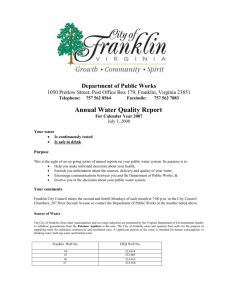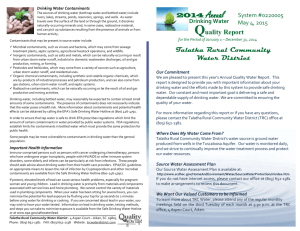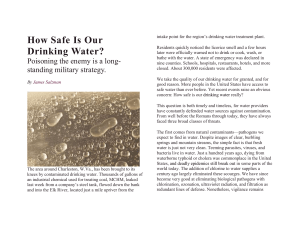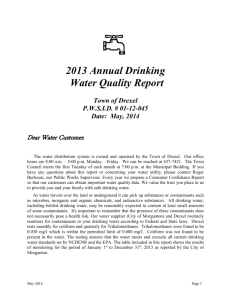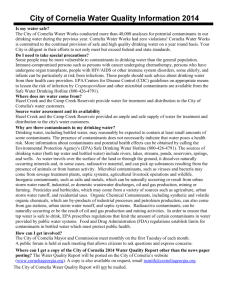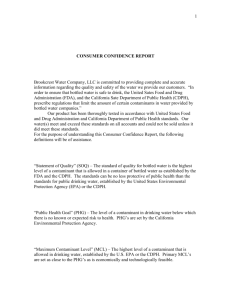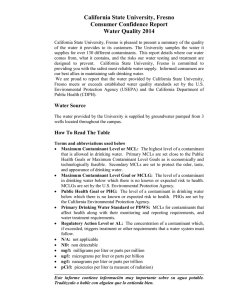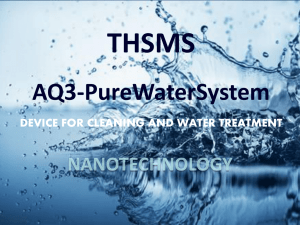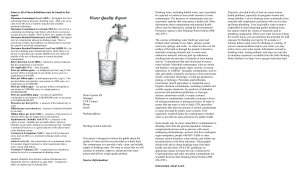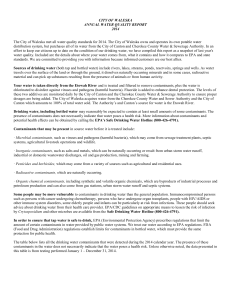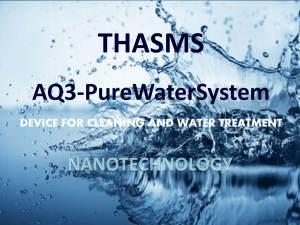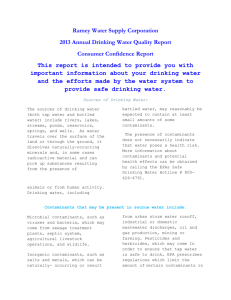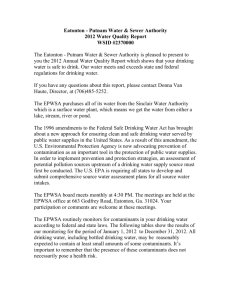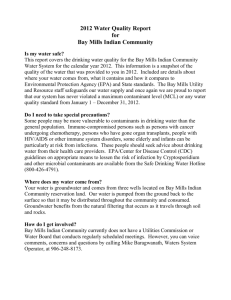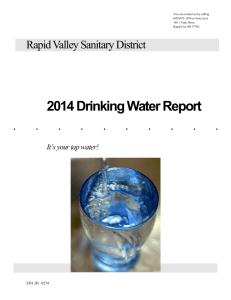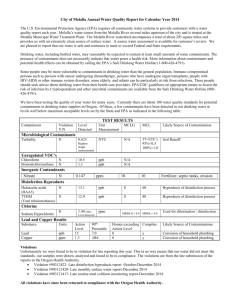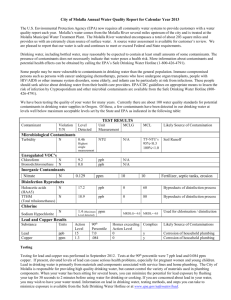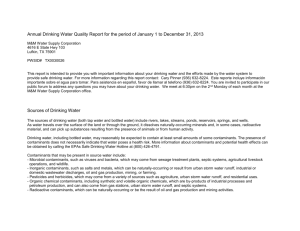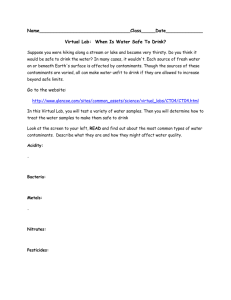annual drinking water quality report for 2005
advertisement
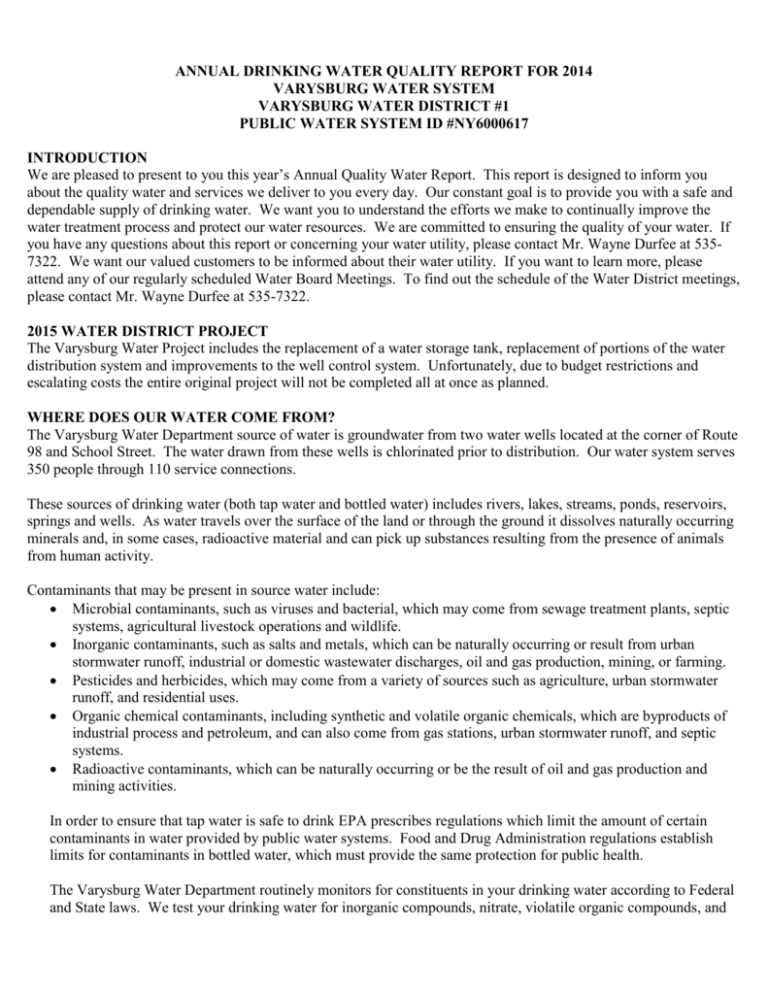
ANNUAL DRINKING WATER QUALITY REPORT FOR 2014 VARYSBURG WATER SYSTEM VARYSBURG WATER DISTRICT #1 PUBLIC WATER SYSTEM ID #NY6000617 INTRODUCTION We are pleased to present to you this year’s Annual Quality Water Report. This report is designed to inform you about the quality water and services we deliver to you every day. Our constant goal is to provide you with a safe and dependable supply of drinking water. We want you to understand the efforts we make to continually improve the water treatment process and protect our water resources. We are committed to ensuring the quality of your water. If you have any questions about this report or concerning your water utility, please contact Mr. Wayne Durfee at 5357322. We want our valued customers to be informed about their water utility. If you want to learn more, please attend any of our regularly scheduled Water Board Meetings. To find out the schedule of the Water District meetings, please contact Mr. Wayne Durfee at 535-7322. 2015 WATER DISTRICT PROJECT The Varysburg Water Project includes the replacement of a water storage tank, replacement of portions of the water distribution system and improvements to the well control system. Unfortunately, due to budget restrictions and escalating costs the entire original project will not be completed all at once as planned. WHERE DOES OUR WATER COME FROM? The Varysburg Water Department source of water is groundwater from two water wells located at the corner of Route 98 and School Street. The water drawn from these wells is chlorinated prior to distribution. Our water system serves 350 people through 110 service connections. These sources of drinking water (both tap water and bottled water) includes rivers, lakes, streams, ponds, reservoirs, springs and wells. As water travels over the surface of the land or through the ground it dissolves naturally occurring minerals and, in some cases, radioactive material and can pick up substances resulting from the presence of animals from human activity. Contaminants that may be present in source water include: Microbial contaminants, such as viruses and bacterial, which may come from sewage treatment plants, septic systems, agricultural livestock operations and wildlife. Inorganic contaminants, such as salts and metals, which can be naturally occurring or result from urban stormwater runoff, industrial or domestic wastewater discharges, oil and gas production, mining, or farming. Pesticides and herbicides, which may come from a variety of sources such as agriculture, urban stormwater runoff, and residential uses. Organic chemical contaminants, including synthetic and volatile organic chemicals, which are byproducts of industrial process and petroleum, and can also come from gas stations, urban stormwater runoff, and septic systems. Radioactive contaminants, which can be naturally occurring or be the result of oil and gas production and mining activities. In order to ensure that tap water is safe to drink EPA prescribes regulations which limit the amount of certain contaminants in water provided by public water systems. Food and Drug Administration regulations establish limits for contaminants in bottled water, which must provide the same protection for public health. The Varysburg Water Department routinely monitors for constituents in your drinking water according to Federal and State laws. We test your drinking water for inorganic compounds, nitrate, violatile organic compounds, and lead and copper. In addition, we test the water for coliform bacteria monthly and chlorine daily in your drinking water. The attached table depicts which compounds were detected in your drinking water. It should be noted that all drinking water may be reasonably expected to contain at least small amounts of some contaminants. The presence of contaminates does not necessarily indicate that water poses a health risk. More information about contaminants and potential health effects can be obtained by calling the EPA’s Safe Drinking Water Hotline (800-426-4791) or the Wyoming County Health Department (585-786-8894). Source Water Assessment The New York State Health Department has completed a source water assessment for this system based on available information. The state source water assessment includes a susceptibility rating based on the risk posed by each potential source of contamination and how easily contaminants can move through the subsurface of the wells and springs. The susceptibility rating is an estimate of the potential for contamination of the source water, it does not mean that the water delivered to the customers is, or will become contaminated. For more information contract our water department. The assessment found a medium to high potential for contamination with regards to protozoa, enteric bacteria and enteric viruses. The potential source of these contaminants is animal pasture land and other agriculture related activities. The county and state health departments will use this information to direct future source water protection activities. Is our water safe for everyone? It should be noted that some people may be more vulnerable to contaminants in drinking water than the general population. Immuno-compromised persons such as persons with cancer undergoing chemotherapy, persons who have undergone organ transplants, people with HIV/AIDS or other immune system disorders, some elderly, and infants can be particularly at risk from infections. These people should seek advice about drinking water from their health care providers. EPA/CDC guidelines on appropriate means to lessen the risk of infection by cryptosporidium and other microbiological contaminants are available from the Safe Drinking Water Hotline (800-426-4791). Closing Thank you for allowing us to continue providing your family with clean, quality water this year. In order to maintain a safe and dependable water supply we sometimes need to make improvements that will benefit all of our customers. We ask that all our customers help us protect our water sources, which are the heart of our community, our way of life and our children’s future. Please call our office if you have questions.

